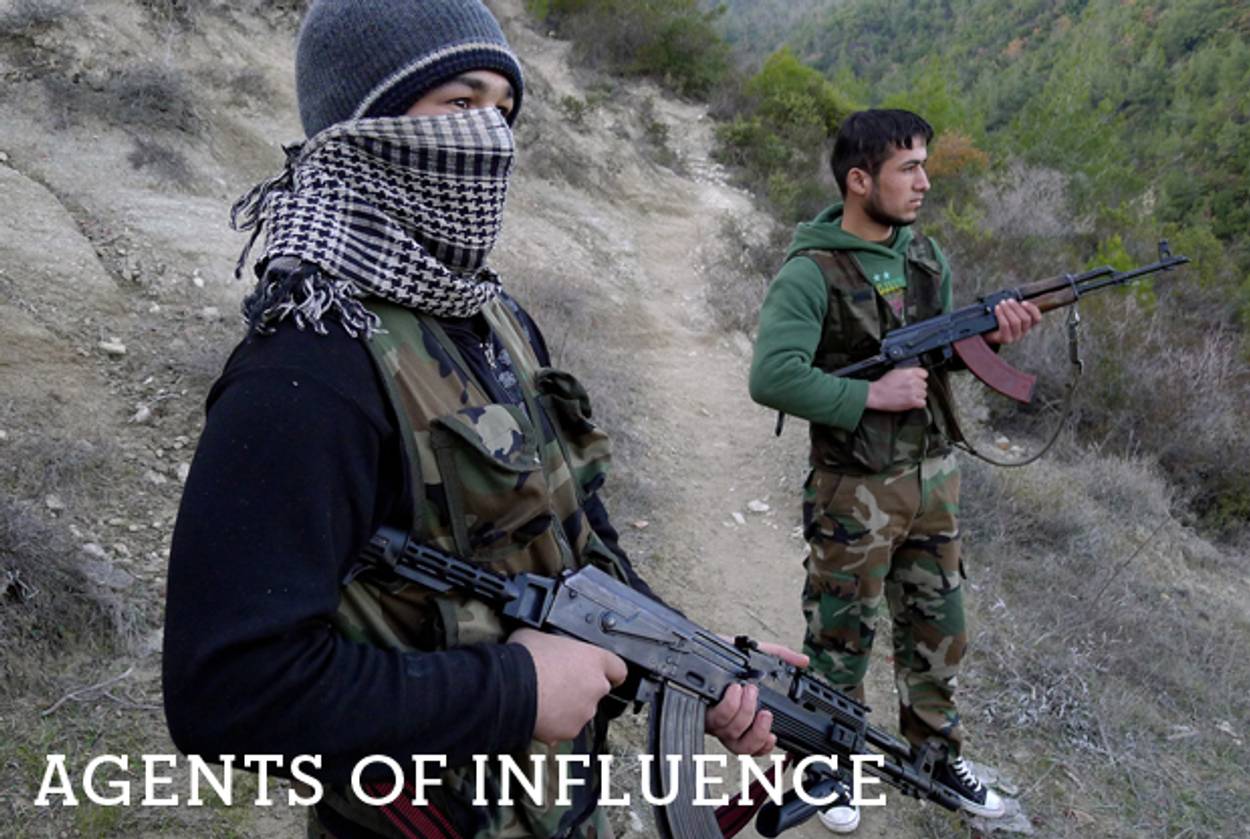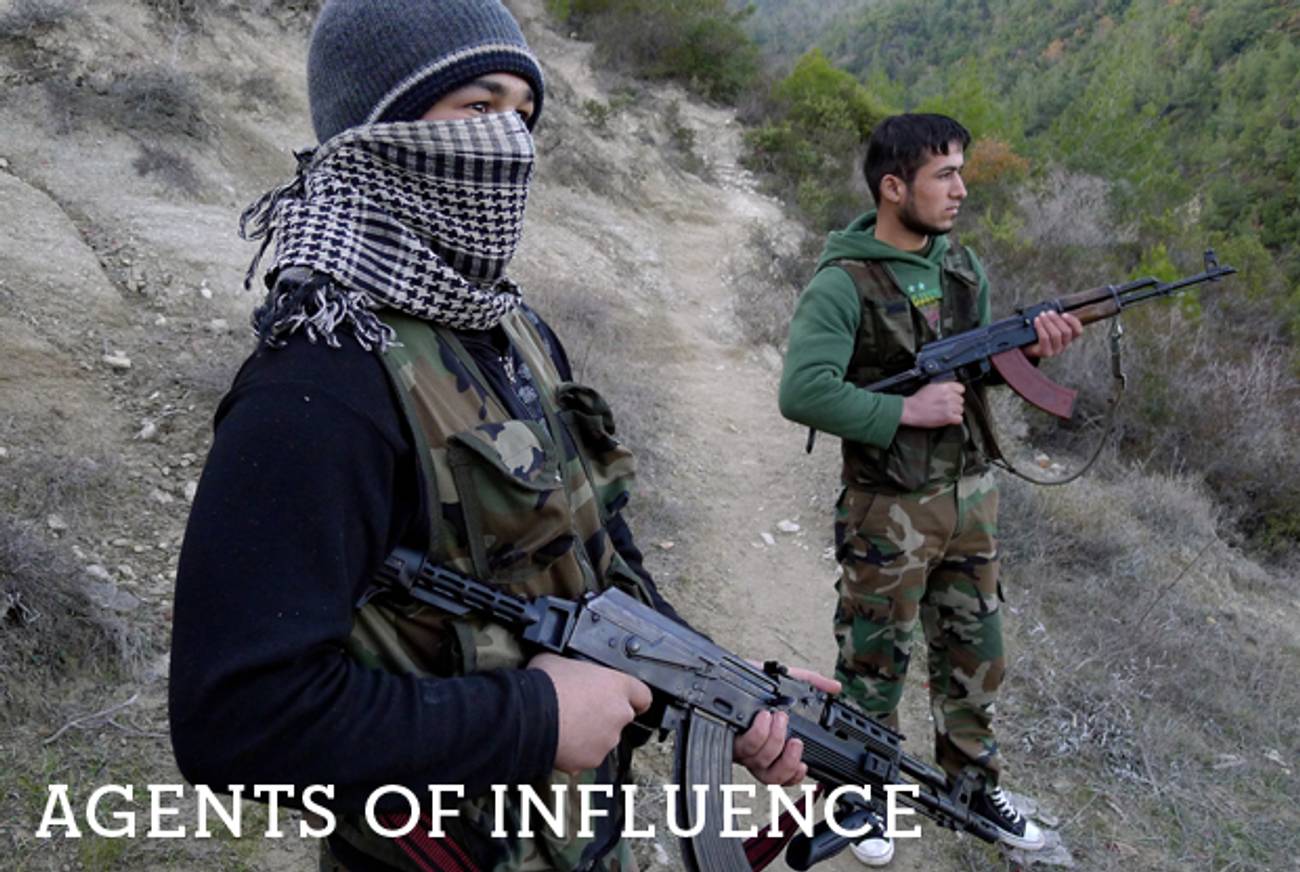Interference
Washington should back the Free Syrian Army in its insurgency against Bashar al-Assad, since toppling his regime would strike a blow against Iran




Should the United States act to protect Syrian civilians from their murderous regime? Secretary of State Hillary Clinton said on Monday that there won’t be international troops dispatched to Syria—at least not without the permission of Bashar al-Assad, the man who is killing Syrians in their homes. Don’t hold your breath.
But the more serious case the administration is making is that it doesn’t have to do anything because the regime in Damascus is already on its way out. As White House Chief of Staff Jacob Lew said Sunday it is “only a matter of time before the government of Syrian President Bashar Assad collapses.” Perhaps. But in the meantime, many more innocent Syrians will be murdered in addition to the 7,000 that have been killed in the last 11 months. Should that terrible reality matter to U.S. policymakers? In short, and as callous as it sounds, not really.
The president’s chief responsibility is to protect the citizens and interests of the United States. Yet since the Clinton Administration intervened in the Bosnian war and Kosovo conflict to protect the Bosnians, and then the Kosovars, from the Serbs, the notion that it is the duty of the United States to protect foreign nationals from maniacal foreign regimes has captivated policymakers and analysts.
We saw the most recent iteration of this thinking when the Obama Administration backed NATO action to bring down Muammar Qaddafi in Libya. But it was under the George W. Bush Administration that responsibility to protect was institutionalized in the country’s political and military echelons. It was dubbed counterinsurgency, or COIN, and it is based on the proposition that in order to defeat insurgencies it is necessary to protect the locals who might otherwise lend insurgents their support.
The problem with this doctrine is not simply that it risks American lives for the sake of foreign nationals, including those who may in fact be hostile to the United States, but that it tends to obscure the strategic rationale underlying armed conflict. For example, because American officials were committed to the notion that Iraq’s various insurgencies were primarily domestic affairs that required coalition forces to win the trust of locals, they ignored the mounds of evidence of Iranian involvement in the conflict, including satellite images of camps across the border where the Iranian Revolutionary Guards Corps trained Iraqis in the use of the improvised explosive devices that killed and wounded thousands of American soldiers. In short, counterinsurgency doctrine prevented U.S. officials from understanding that the Iraq War was not simply about Iraqi insurgents, whether they were Sunni tribes, al-Qaida, or Shia militants. It was about Iran’s project to drive the United States from the Middle East.
Now, under the same logic that gave rise to COIN and subsequently drove the United States to bring down Qaddafi, some of President Obama’s supporters, including former State Department Director of Policy Planning Anne-Marie Slaughter, are arguing that Washington has a responsibility to protect Syrian civilians from their bloody-minded ruler. But as we’ve learned from the Iraq War, and as we may soon see in Libya, this is the wrong way to frame the conflict.
The fundamental question the White House should be asking is: Does the United States have an interest in pushing out Assad?
The answer is yes. If Obama is serious about stopping Iran from getting a nuclear weapon, while also keeping the United States out of what might likely turn into a region-wide war, helping topple Assad is a no-brainer. Since the Syrian regime is Iran’s one Arab ally and maybe its sole strategic partner, losing Assad would strike a serious blow to the Islamic Republic.
However, helping topple Assad doesn’t mean that Washington should send U.S. troops. Nor does it have to, given that there are proxy forces on the ground requesting support.
The best-known of them is the Free Syrian Army, led by a defector from the Syrian military, Col. Riad al-Asaad (no relation to the Syrian president) who is now based in Turkey. For good reason, analysts have questioned whether the Free Syrian Army can be an effective fighting force against the superior firepower of the 600,000-man-strong Syrian Army. After all, the Free Syrian Army is nothing more than a collection of militias comprised almost exclusively of the country’s Sunni Arab majority. But if the Free Syrian Army is a sectarian militia, the same is true of the remnants of the Syrian Army.
Secretary Clinton says that a political solution is the most desirable outcome in Syria and that no one wants a civil war. The truth is that there has been a civil war under way there since the minority Alawite sect, of which Assad is a member, came to power in 1966. The Alawites, a heterodox Shia sect that comprises around 12 percent of the population, have been despised by the Sunnis for close to a thousand years as heretics. Thus, over the last half-century, this civil war has been waged at varying levels of intensity, including a military conflict that began in the late 1970s and culminated in the 1982 massacre at Hama, when Hafez al-Assad gave the orders to raze the town and kill tens of thousands.
Hama was 30 years ago this month. And now, almost a year into the current phase of Syria’s civil war and many thousands of Sunni corpses later, the Assad regime is able to count on only the Alawites, who form the most trustworthy units of the Syrian military and security apparatus, as well as the paramilitary gangs, called the shabbiha. The difference between the Syrian Army and the Free Syrian Army is that the former is much better equipped. The latter draws from a much larger segment of Syrians: More than 60 percent of the population is Sunni Arab.
This explains why the uprising shows no signs of abating. The Sunni Arab community is too large for the regime to manage when it is in open rebellion throughout the country. As we’ve seen over the last 11 months, when the regime brings quiet to one city, another erupts. In the town of Zabadani, for instance, Syrian troops were compelled to withdraw because the regime cannot absorb the military casualties that would be necessary to take a given city. Assad cannot put down the uprising because he simply doesn’t have the numbers to do so.
Still, despite what the White House says, it’s far from clear that Assad is finished. By training and arming the Free Syrian Army, either directly or through regional allies like Qatar, Washington can help consolidate the various militias under an organized command. Fighters will go where the money is.
The goal shouldn’t only be bringing down Assad, but also having leverage in Syria’s post-Assad future. The longer the conflict continues, the more regional—and even international—actors will be drawn in to protect or advance their own aims.
For instance, our onetime Cold War rivals in Moscow are doing all they can to prop up Assad, sending him arms and blocking the Obama Administration at the United Nations Security Council. Our current foes in the Persian Gulf have even more at stake. Tehran is reportedly sending reinforcements from the Iranian Revolutionary Guard Corps.
It’s time for the United States to invest in the outcome as well. And if it happens to dovetail with the humanitarian rationale, so much the better.
Lee Smith is the author of The Consequences of Syria.
Lee Smith is the author of The Permanent Coup: How Enemies Foreign and Domestic Targeted the American President (2020).